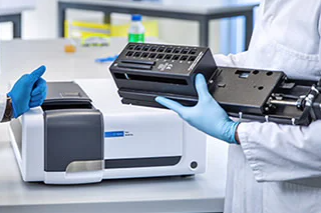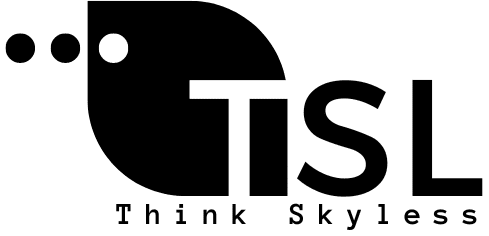
UV-Vis spectroscopy is a type of spectroscopy that measures the absorbance of ultraviolet (UV) and visible light of your chosen sample. Like FTIR, UV-VIS spectroscopy is a technique that is useful in the identification of pure drug compounds. It is used to identify and quantify molecules, determine their structures, study reactions, and measure the purity of a sample.
The technique works by shining UV or visible light of a specific wavelength onto a sample. Its sample absorbs light from the light source, and a detector measures the absorbance. Then the concentration of the sample is then determined by comparing the absorbance to a reference sample. Agilent UV VIS spectroscopy provides a great deal of molecular analysis versatility.
In this blog, we will explore the basics of UV-Vis spectroscopy: its applications, and the advantages and disadvantages of the technique.
How Does a UV-Vis work?

UV-Vis Working
If you feel puzzled by these overwhelming terminologies, here’s a simplified diagram of how the UV-Vis spectrophotometer works. It consists of a light source, a wavelength selector, a sample holder, a detector, and a readout device. The light source emits UV and visible light that is shone onto the sample.
A sample of the object to be tested will absorb the light, and the amount of light absorbed is then measured by the detector. The detector will then send the data to the readout device, which displays the absorbance of the sample. Using a computer, the absorbance of the sample is then compared to the absorbance of a reference sample to determine the concentration of the sample.
Comparing the sample concentration can then be used to examine processes and structures, identify chemicals, and gauge the purity of a sample. Understanding the tools and setups used in UV-Vis spectroscopy experiments is crucial. For instance, most plastic cuvettes are unsuitable for research on UV absorption since plastic often absorbs UV radiation.
Applications of UV-Vis Spectroscopy
UV-Vis spectroscopy is used in a variety of industries for several applications, and these include:
1. Pharmaceutical Industry
UV-Vis spectroscopy is used to identify and quantify active pharmaceutical ingredients (API), determine a sample’s purity, and study a drug’s stability. It can also detect changes in the structure of drugs, indicating possible degradation or contamination.
2. Food Industry
The technique is used to identify and quantify food additives and contaminants, measure the nutritional content of food, and analyze the shelf life of food products. Not only that, but it can also detect the presence of food spoilage microorganisms such as bacteria, fungi, and yeasts.
Additionally, UV-Vis spectroscopy can be used for quality control purposes to ensure that the food products you are eating meet the desired specifications.
3. Chemical Industry
UV-Vis spectroscopy is used to identify and quantify chemicals, study chemical reactions, and measure the purity of a sample. It is a powerful tool even in the chemical world. By monitoring the absorbance of different wavelengths, it is possible to gain insights into a reaction’s progress and detect unwanted byproducts.
4. Environmental Industry
The technique is used to monitor water quality, detect pollutants, and measure the concentrations of various substances in the environment. This method ensures that the water in the faucet is of good quality. UV-Vis spectroscopy can also be used to detect and quantify the presence and concentration of oil in water, which is important for monitoring and responding to oil spills.
Additionally, UV-Vis spectroscopy is used in academic research in various fields. It is also used in most industries to monitor and control quality.
Advantages of UV-Vis Spectroscopy
UV-Vis spectroscopy offers some advantages over other analytical techniques. It is a fast, accurate, and reliable technique that can analyze various samples, from pharmaceuticals to food products and even complex chemical compounds. It is also a relatively inexpensive technique if compared to their counterparts, requiring only a spectrophotometer and a few consumables.
The technique is also highly sensitive, allowing for detecting even trace amounts of substances. Additionally, UV-Vis spectroscopy can be used to measure the concentrations of multiple substances in a single sample, making it a useful tool for multi-component analysis.
Disadvantages of UV-Vis Spectroscopy
Like other analytical techniques, UV-Vis spectroscopy also has a few setbacks. The technique is limited to the measurement of substances that are UV and visible light-absorbing. This means that compounds like hydrocarbons that do not absorb UV-Vis light cannot be measured.
In addition, the technique is not suitable for measuring very dilute concentrations of a substance. UV-Vis spectroscopy cannot provide structural information about a sample, such as its molecular weight or isomeric form.
The Power of UV-Vis Spectroscopy
Certainly, UV-Vis spectroscopy is a powerful analytical tool. In the market, it is usually used to identify and quantify molecules, determine their structures, study reactions, and measure the purity of a sample. So far, this technique has always been a strong competitor due to its comprehensive profile and range.


